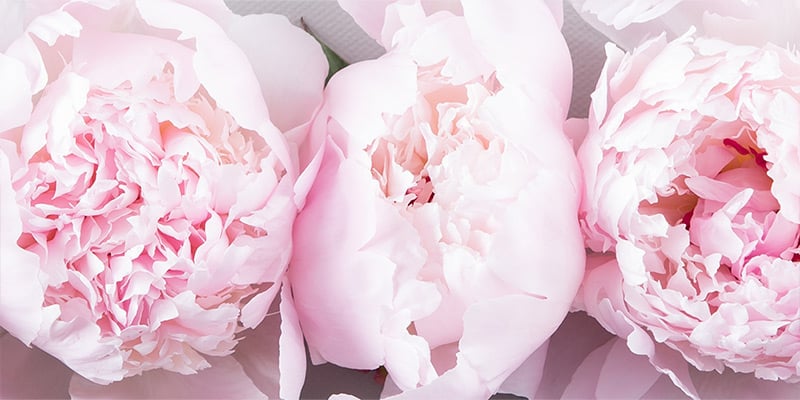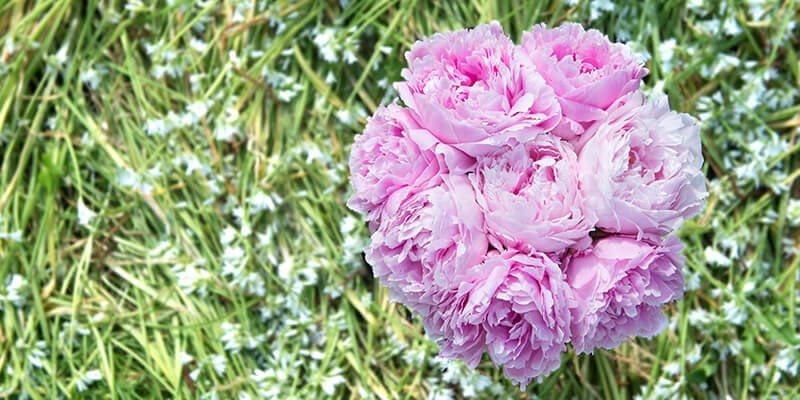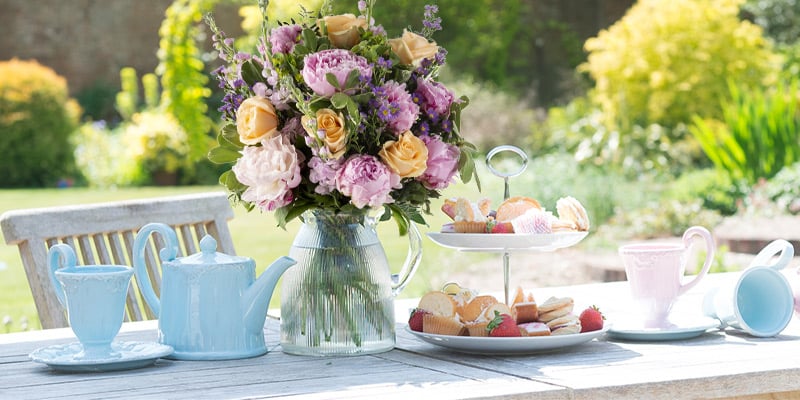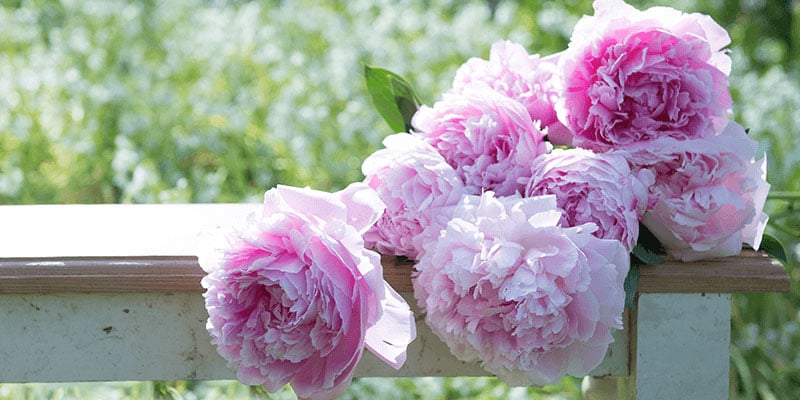
Peonies are some of our favourite blooms, and we're so happy they're finally back in season!
Find out more about the beautiful Peony, including its history, facts, care and more.
Peony Season
Peony season is here! We are currently able to experience the joy of British peonies at their best for a very short time. Peonies bloom from April to June, with coral peonies appearing first, followed by classic pink peonies in the early days of summer.
Most of us love the beautiful cloud like flower, but how much do you really know about them? Keep reading to find out more about one of our favourite summertime blooms.

The History Of The Peony Flower
There are many tales as to how the Peony got its name. According to one tale the name originates from the Greek word Paeon.
In Greek mythology, Paeon was the physician to the gods who angered his teacher Asclepius after he extracted a milky liquid from the root of a peony that cured Pluto. Asclepius was the god of medicine and healing. He threatened to kill Paeon out of jealousy because he was outsmarting his teacher. Zeus saved him by turning him into a beautiful flower, the peony.
Another myth links the name Peony back to a nymph named Paeonia whose beauty attracted the attention of Apollo. Out of spite, Aphrodite turned her into a peony. This legend is likely what led to the flower’s meaning of poor luck in the Victorian age.
Peonies have been reported to have dated back to 1000BC in the gardens of China and by the eighth century, they had reached Japan who are major producers of the peony. In the Eastern world, peonies were mainly used for their medicinal properties. The peony's roots and seeds were frequently used to treat headache and asthma and to relieve pain associated with childbirth.
Tree peonies were first brought to Europe in the early 1800s, after being discovered by explorers. Nowadays, they're incredibly popular as ornamental garden plants and cut flowers.

Peony Facts
The majority of peony plants in gardens today are hybrids of original true varieties.
There are around 40 species of peony that originate from Asia, Europe and North America.
Peony flowers can reach up to 10 inches in diameter.
They are bowl-shaped and available in all colours except blue.
Peonies bloom from late spring to early summer.
Peonies are able to perform self-pollination.
Partially cooked and sweetened petals of peony are consumed as desserts in China. Fresh petals can be consumed in the form of salad or used as a garnish for lemonade.
Peonies signify romance, elegance, honour, wealth and abundance in the language of flowers.
The peony is one of the most popular flowers for summer wedding bouquets. It is also the official flower for the 12th wedding anniversary.
The peony is the state flower of Indiana.
The peony is a perennial plant that can survive up to 100 years when it is cultivated under optimal conditions.

How to Care For Cut Peonies
Our peonies arrive in bud, meaning they won't look like much to begin with. They'll have small, round buds - but they're well worth the wait! With proper care, these unassuming buds will open up after a few days to reveal their sumptuous petals.
Watch our video guide or read our tips to make the most out of your peonies.
Steps
- Remove packaging.
- Trim the stems at a 45° angle.
- Remove any leaves on the stems that fall below the waterline.
- Put your peonies in a clean vase with lukewarm water and add the flower food included with your bouquet.
- Display your peonies in an area away from drafts, heat, direct sunshine or fresh fruit.
- Ensure the vase remains clean and change the water every few days.
Why aren't my peonies opening?
The peonies in our bouquets will arrive in bud and will take a couple of days to start opening. If they don't open after a few days, you may find that the peony heads are covered in a sap that can prevent them from opening. To give a them little help, take the peony from the bouquet and hold it head down under a tap of room temperature water to wash away the sap.
Recut the stems to help them absorb more water, and then place them back in the vase - but this time, in warm water. Warm water can help to stimulate the stems.
Would you like to shop our beautiful range of peonies? You're sure to find the perfect bunch to suit your home or recipient. Click here to view our range!







